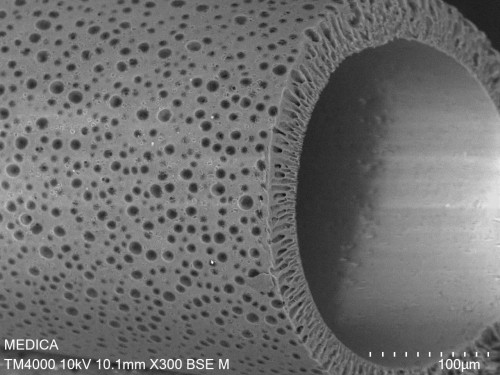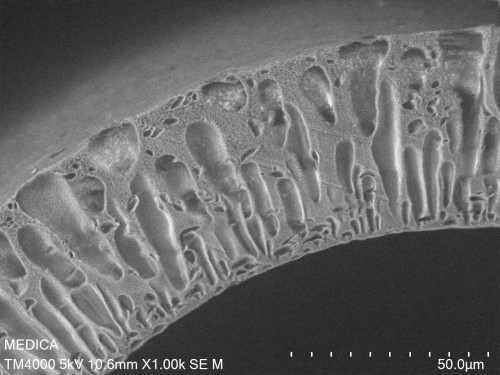
We are proud to announce that Medica S.p.A. and the CNR (National Research Council) have registered the Graphisulfone® trademark. This achievement is the result of a successful synergy between our company and one of the country's most prestigious scientific institutions, highlighting our shared commitment to excellence and innovation.
Graphisulfone® is the result of years of advanced research carried out with the support of our Research and Development department and the expertise of the CNR. This new technology represents a significant leap forward, set to improve the quality of our products and open new pathways in the field of medical solutions.
THE CREATION OF GRAPHISULFONE®
In recent years, Medica has worked closely with the team of Dr. Manuela Melucci, researcher at the CNR's ISOF institute and scientific head of the research project, on membrane functionalisation, developing hollow-fiber membranes with enhanced capabilities for water purification through the adsorption of emerging contaminants. Graphene oxide (GO), among other nanomaterials, was chosen for its adsorption efficiency and large contact surface area.

During the Graphil project, co-financed with European Union funds, enhanced PSU-GO membranes were developed. Through a process covering all industrial development stages — from laboratory prototype to large-scale production — the new Graphisulfone® composite was created. A year after the conclusion of the Graphil project, Graphisulfone® continues its journey to the market with the registration of its trademark.
THE IMPACT OF GRAPHISULFONE®
Graphisulfone® simultaneously removes microbiological and emerging contaminants, ensuring superior water purification efficiency. This is achieved through the combination of hollow fibers and graphene oxide, which provide Graphisulfone® with a dual mechanism for contaminant removal:
- micro/ultrafiltration, via a physical sieve mediated by hollow fibers, ensuring the removal of microbiological contaminants;
- adsorption through chemical interactions with graphene oxide, enabling the removal of pesticides, pharmaceuticals, perfluorinated compounds, disinfection by-products, and heavy metals.
The new Graphisulfone® composite has demonstrated superior removal capabilities for various contaminants, including heavy metals (Pb, Cu, Cr(III)) and perfluoroalkyl substances (PFAS), surpassing traditional technologies.

THE IMPORTANCE OF COLLABORATION BETWEEN PUBLIC RESEARCH AND BUSINESSES
The registration of the Graphisulfone® trademark not only represents a significant technological milestone but also highlights the importance of cooperation between public research and private enterprises.
The collaboration with the CNR demonstrates the crucial need to unite the forces of academia and industry to accelerate scientific progress and translate discoveries into tangible solutions for the market. This type of partnership allows for the optimal use of each sector's specific expertise, ensuring that theoretical research turns into applied innovation with a real impact on people's health and well-being.
Back to news
